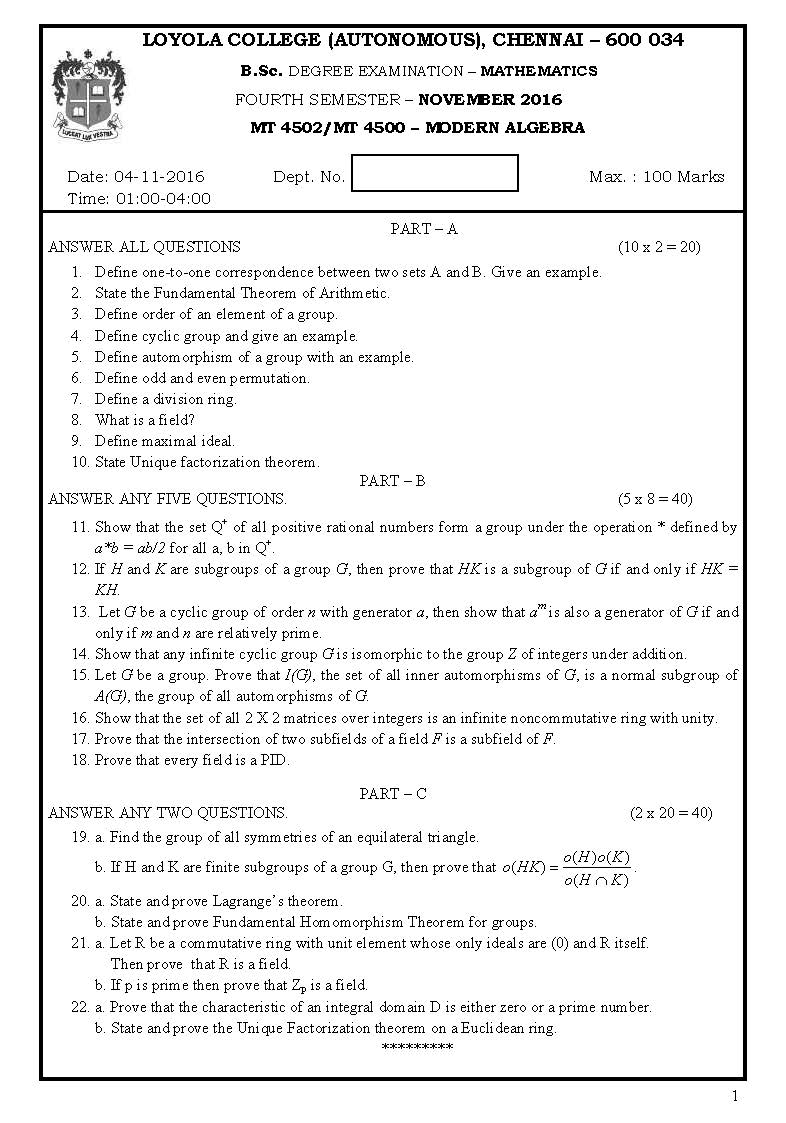LOYOLA COLLEGE (AUTONOMOUS), CHENNAI – 600 034
B.Sc. DEGREE EXAMINATION – MATHEMATICS
|
FOURTH SEMESTER – APRIL 2008
MT 4502 / 4500 – MODERN ALGEBRA
Date : 26/04/2008 Dept. No. Max. : 100 Marks
Time : 9:00 – 12:00
PART – A
Answer ALL questions.: (10 x 2 = 20)
- Define an equivalence relation on a set.
- Define a binary operation on a set.
- Define a cyclic group.
- Define a quotient group of a group.
- Define an isomorphism.
- Define a permutation group.
- Define a division ring.
- Define a field.
- Define an integral domain.
- What is a Gaussian integer?
PART – B
Answer any FIVE questions. (5 x 8 = 40)
- If G is a group, then prove that
- for every
- for all
- Prove that anon – empty subset H of a group G is a subgroup of G if and only if
(i)
(ii)
- If H is a subgroup of a group G, then prove that any two left Cosets of H in G either are identical or have no element in common.
- If H is a subgroup of index 2 in a group G, prove that H is a normal subgroup.
- If is a homomorphism of a group G into a group , prove that
(i) , the identity element of G1
(ii) for all
- Show that the additive group G of integers is isomorphic to the multiplicative group
- Prove that the intersection of two subrings of a ring R is a subring of R.
- Find all the units in Z(i).
PART – C
Answer any TWO questions. (2 x 20 = 40)
- State and prove the Fundamental theorem of arithmetic.
- a) State and prove Lagrange’s theorem.
- b) Show that every subgroup of an abelian group is normal. (14+6)
- a) State and prove the fundamental theorem of homomorphism on groups.
- b) Define an endomorphism an epimorphism and an automorphism.
- State and prove unique factorization theorem.
